Last Saturday, Hubs and I trekked into LA to visit the California Science Center. The five-year-old boy in me was delighted: a train, the subway, and a space shuttle!
 |
| Photo courtesy of Jason Ailes / Dec 2012 |
The exhibit for Endeavour is
well done, although it's not where the shuttle will permanently reside. The
architectural drawings and displays are impressive: multiple levels, the
shuttle displayed vertically with its rockets, and a slide! For more
information, check out the California Science Center website. You can even find
out how to sponsor a tile on Endeavour's belly, should you happen to have a
spare $1000 lying about.
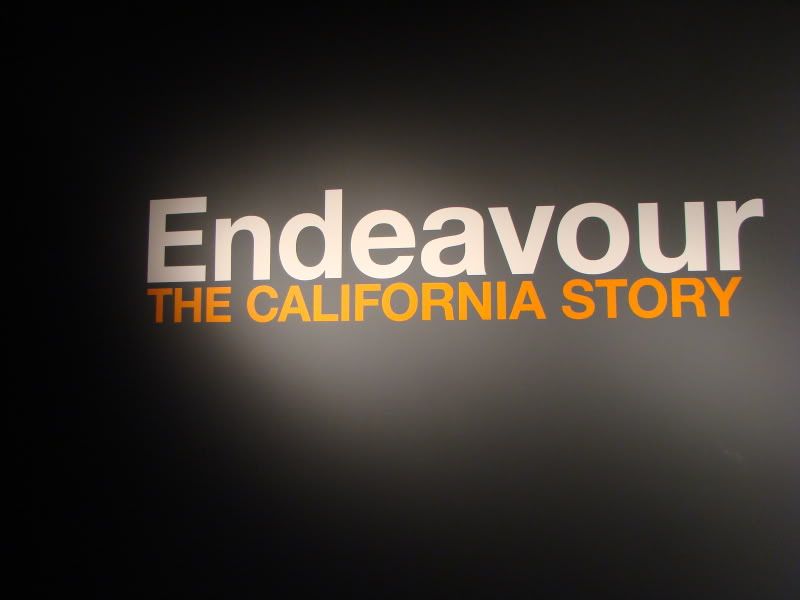 |
| Photo courtesy of Jason Ailes / Dec 2012 |
We mosied through the
exhibit, which included information about the shuttle’s naming, a mock-up of
launch control from Cape Canaveral in Florida, and a launch simulator. Also
featured was a video montage of all shuttle launches in the program, including
all 25 of Endeavour’s, arranged in a grid on a large television screen. Once a
shuttle left our atmosphere, the tiny square of that screen went dark to
signify a successful launch. The only exception was Challenger, which was
frozen on the screen at the moment of her explosion. I don’t think mine were
the only eyes with tears.
 |
| Photo courtesy of Jason Ailes / Dec 2012 |
There was a display holding
the wheels from the shuttle, with the rubber shredded in places due to the heat
and high impact of landing. The front landing gear wheels were actually just
within reach, and guests were encouraged to touch them. Things like this feel
momentous to me. When I traveled in Europe, I routinely touched things I
shouldn’t – like the sarcophagi of kings and queens; and things I should – like
the stones set up for that purpose at Stonehenge. There is something about
putting my hands where someone else, hundreds or thousands of years ago, also
put his hands; there is a connection I feel that transcends time and distance.
It was so with Endeavour’s wheels: I felt connected to those men and women who
made that ultimate leap to expand our understanding of our place in the cosmos.
 |
| Photo courtesy of Jason Ailes / Dec 2012 |
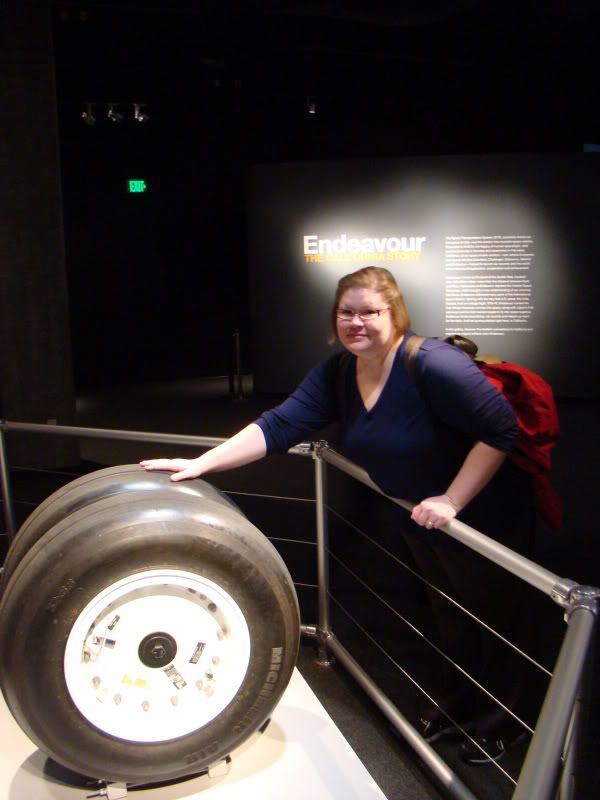 |
| Photo courtesy of Jason Ailes / Dec 2012 |
I felt connected to
Endeavour herself, too. It’s hard not to humanize the shuttle. For centuries, in fact,
people have referred to vessels large and small as “she”. From large ships that
circumnavigate the Earth to small vehicles that navigate our streets, we assign
human characteristics and emotions, and develop relationships with those
vessels that can be incredibly poignant when they come to an end. When my
parents sold their station wagon - affectionately called La Bamba - over 20 years ago, my mom cried; that was the
car she brought each of us home from the hospital in after our births, the car that
had taken us on road trips and brought us safely home again. There are days I
still miss my first car, Beth – a boxy Volvo – and think I could have done more
to save her. I found myself doing the same with Endeavour.
The last part of the exhibit,
just prior to exiting the building for the Samuel Oschin Pavilion and hangar where Endeavour waits for her
permanent home, is a short video of Endeavour’s transit from Los Angeles
International Airport to the California Science Center. It details her movement
through the streets of LA, through neighborhoods, through throngs of people
come out to witness the final leg of her last journey. While I watched, I
wondered what she felt, her cockpit windows open forward, looking down at the
masses of people come out to see her. Was she pleased to know so many people
cared about her? I imagined that she felt empty, that her heart ached to have
had been gutted, to be grounded. I blinked quickly and we moved on.
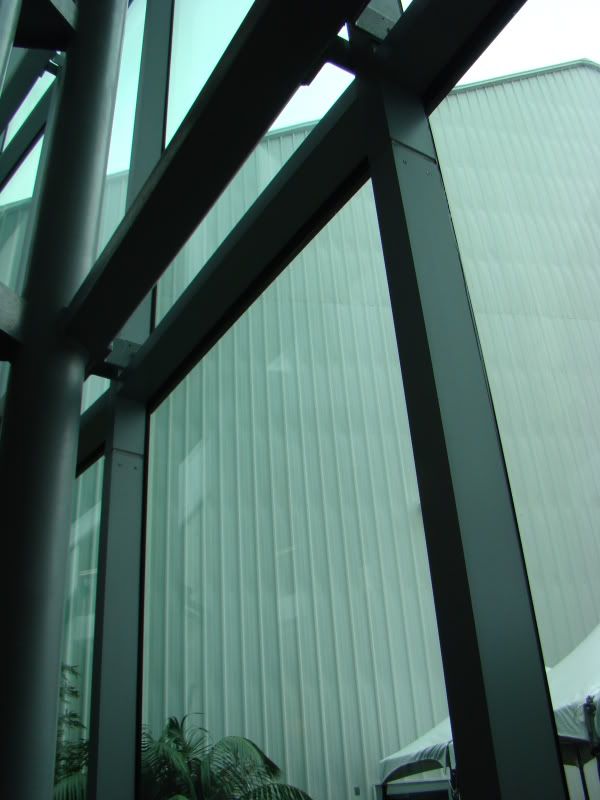 |
| Photo courtesy of Jason Ailes / Dec 2012 |
Down the stairs and outside stands
the hangar that currently houses Endeavour. The hangar is huge and nondescript;
a line of people inched slowly through doors that felt like an airlock. As we
inched through that line my eyes started to prick, my nose to sniffle. Once
inside, looking up at Endeavour, my resolve failed and I started to cry. I
looked up at her, feeling lost and hopeless. All those dreams faded; the sense
of adventure, lost. Closing the shuttle program feels to me like putting our
future on hold. I wondered what she was thinking, silent witness to these
pilgrims paying her homage. She sat so proud, her short wings extended, her windows dark, her engines cold. Did she understand what it meant to
us, that she had gone to space carrying our hopes and dreams, our thoughts of
things bigger than us, our quest for understanding and knowledge? Did she know she would
never fly again? Did she miss it? Was she sad, too?
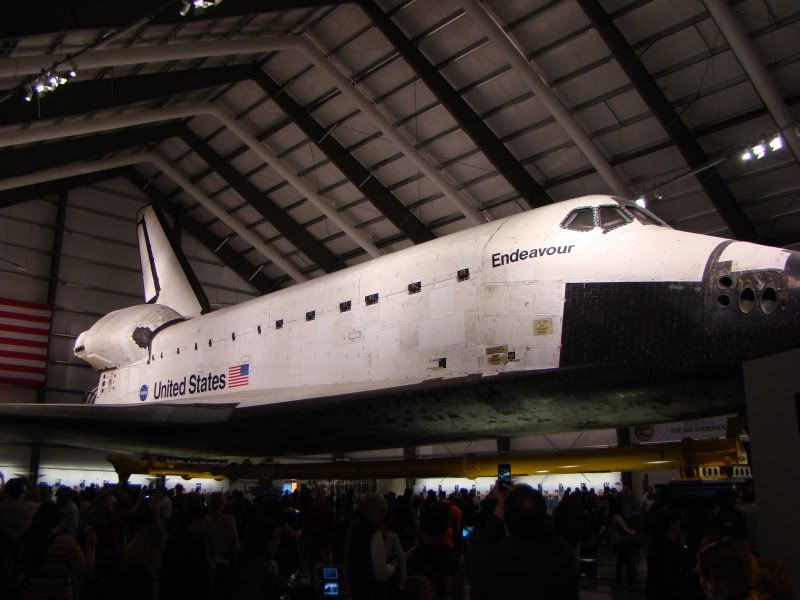 |
| Photo courtesy of Jason Ailes / Dec 2012 |
 |
| Photo courtesy of Jason Ailes / Dec 2012 |
Hubs stood with me for a few
minutes, letting me be sad, letting me feel that it was normal to cry over what
is ultimately an inanimate object. He told me he felt similarly:
“Sometimes, you give an inanimate object
a personality. Then, you pack it full of your hopes and dreams and watch it
fly. You see it reach the stars, to see things you can never hope to in your
entire life. To see such a magnificent thing up close and realize that she's
never going to fly again because…we just can't fund a way to discover more
about this endlessly fascinating universe in which we find ourselves, and it
just makes me want to cry.”
After a few minutes, I composed myself,
and we continued through the exhibit. On the inside walls of the hangar is a
display showing each of the shuttle missions in the program: each placard has a
photo of a piece of equipment, the earth from space, or the crew; a brief description
of the mission; the mission badge; and the names and ranks of the crew members.
We saw Captain Scott several times, who we met at Cape Canaveral at "Lunch with
an Astronaut", in February 2011.
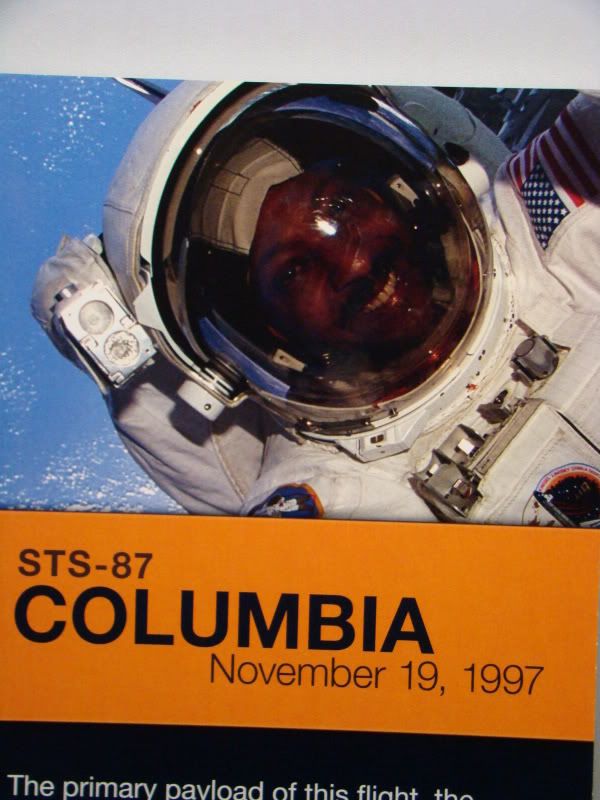 |
| Photo courtesy of Jason Ailes / Dec 2012 |
There were two placards in black & white, the only placards left dark, to commemorate crews lost in the search for knowledge: Challenger and Columbia.
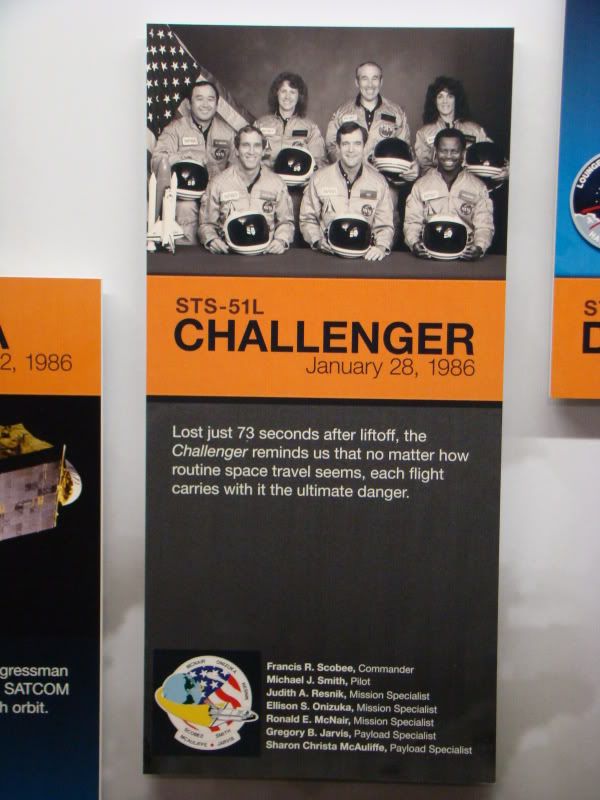 |
| Photo courtesy of Jason Ailes / Dec 2012 |
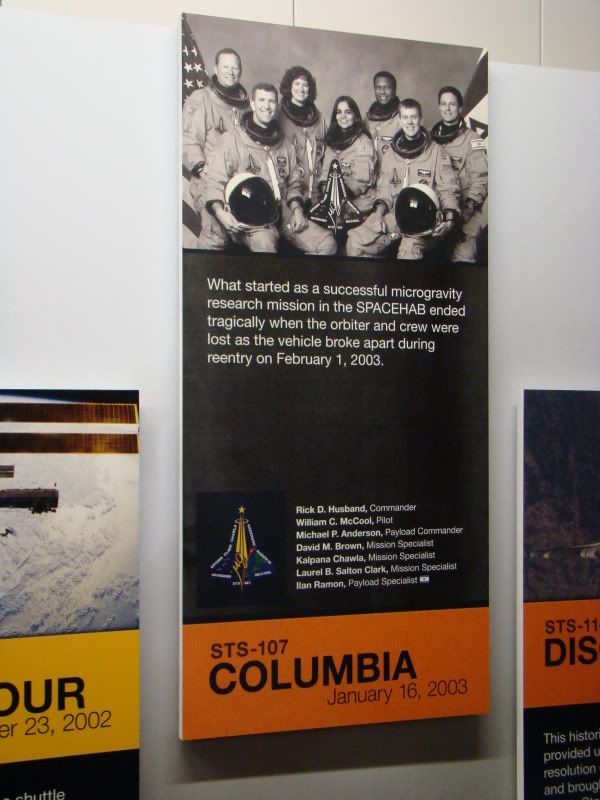 |
| Photo courtesy of Jason Ailes / Dec 2012 |
We looked through the rest of the exhibit,
studied the architectural model and concept drawings for Endeavour’s final
home, and prepared to leave. I stood under her nose, looking up at her dark
windows, and whispered an apology. I told her I was sorry we couldn’t manage to
keep her flying, and that I would mourn the clipping of her wings. Finally, we turned and
left for home.
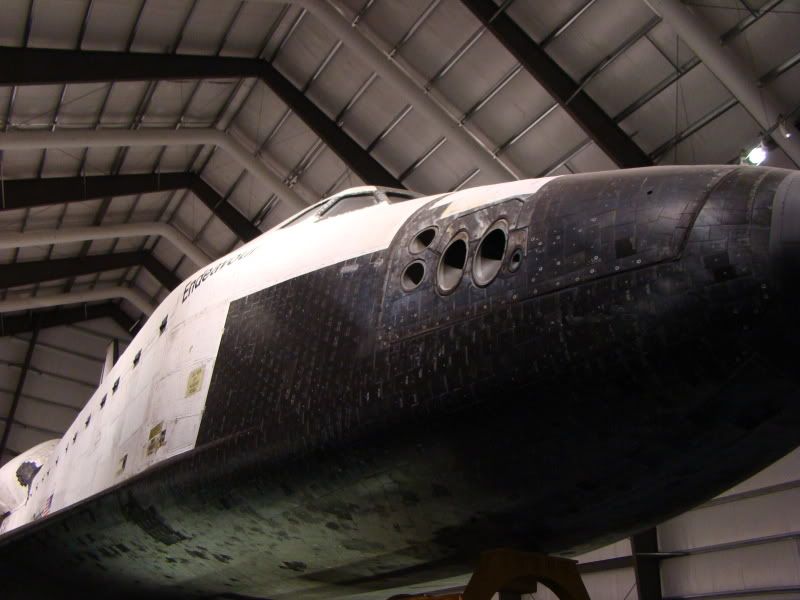 |
| Photo courtesy of Jason Ailes / Dec 2012 |















